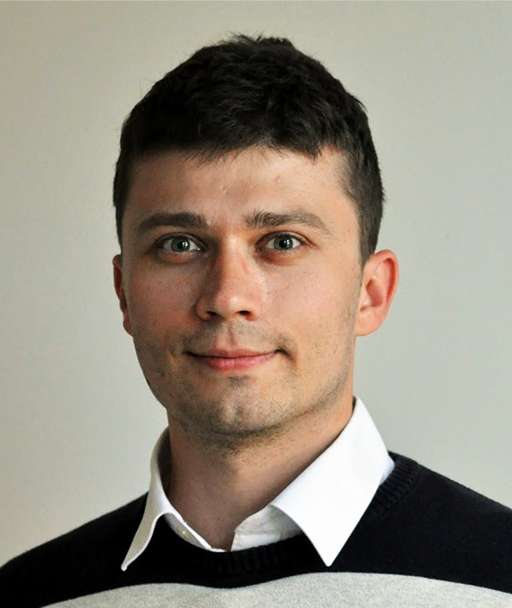About the Conference
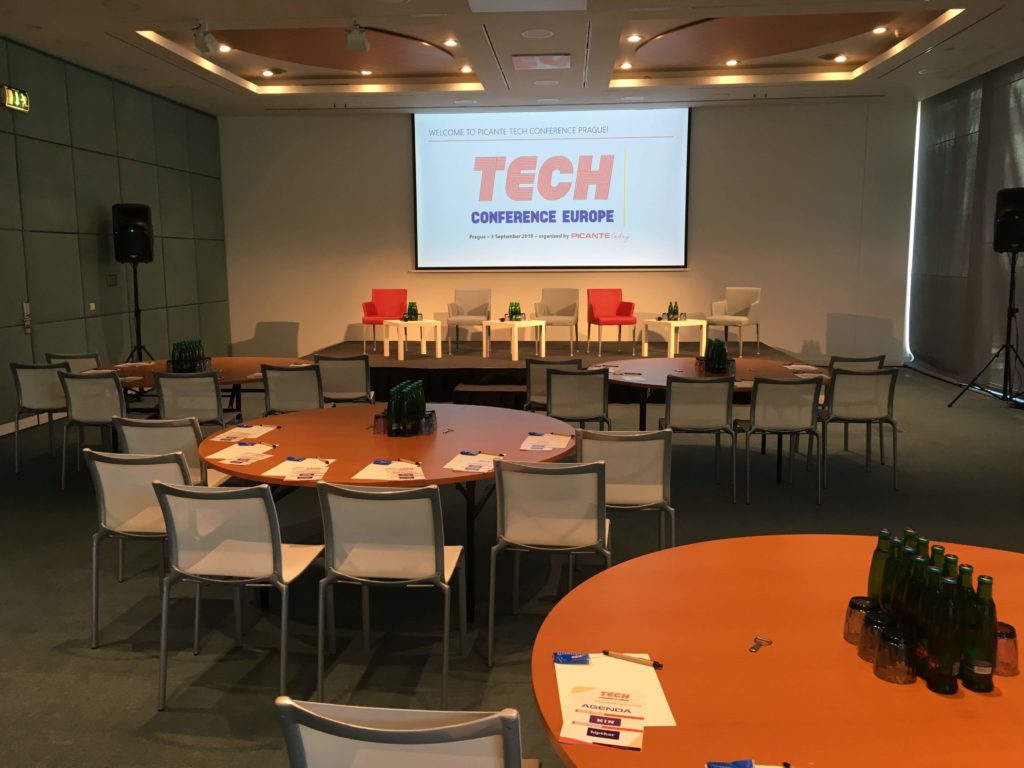
Last week I attended the very first Tech Conference Europe (TCE2019) organized by news publisher PICANTE.today. The conference was not crowded as I am used at academic conferences. However, 25 people being at the conference has an advantage that you can talk to each speaker and attendee personally.
During the conference, the panel discussions alternated with the talks. The panel discussions focused on broader topics such as current use and future evolution of the blockchain, AI, Fintech or VR. The topics were very interesting, but I had a feeling that the experts agree with each other and speak in unison more than I expect. I would be happier to hear more controversial stands, e.g., that blockchain can be misused and for example allows anonymously purchasing illegal goods over the Dark web.
The talks were narrower focused on the specific use of technology, e.g. blockchain, virtual reality or sound authentication. The talks focused on the products of the companies rather than explaining some novel idea or a breakthrough concept. Here, I present four topics that I found interesting to share.
Blockchain is a Tool
The hype behind the cryptocurrencies and blockchain technology seem to diminish since the news don’t report new ICO every day and use of the blockchain technology is not even observed by the end-user.
However, at the conference, I learned that there’s a lot of going on with blockchain technology and many companies implement blockchain in their products. E.g., the Porche company develops blockchain for secure communication with the vehicle. By using blockchain, which avoids communication with the server, opening and closing the car via an app is up to six times faster than before. Another example is BlueQbit, that uses blockchain technology for transportation and shipping.
However, according to Lyle Wraxal, many startups duplicate existing ideas or use blockchain for blockchain because of the hype. These types of startups are likely to fail. They must realize that in order to succeed, they must have a clear idea about their product. And blockchain should be used as a tool to make the product more efficient, available or cheaper for the user. As Tomáš Žilavý from IBM mentioned also mentioned: “Blockchain must have an added value to the product to be useful.”
Besides the commercial sector, the government will also eventually implement the blockchain technology. But due to security reasons, the government is very cautious with the new technologies, so it may take a while. Recall how long it took for the government to use cloud technology or artificial intelligence.
The experts reckon that blockchain is in its infancy, similarly to the Internet in 1990. Soon we will observe outbursts of a lot of new blockchain use cases that we haven’t even imagined, similarly as with the Internet today.
“Blockchain must have an added value for startups. Don’t use it for the sake of hype”
Tomáš Žilavý
“Many organizations prepare for the blockchain”
Dean Rakic
“Many startups duplicate and make blockchain for blockchain. They’ll fail”
Lyle Wraxal
Cyborg: Expand Your Senses
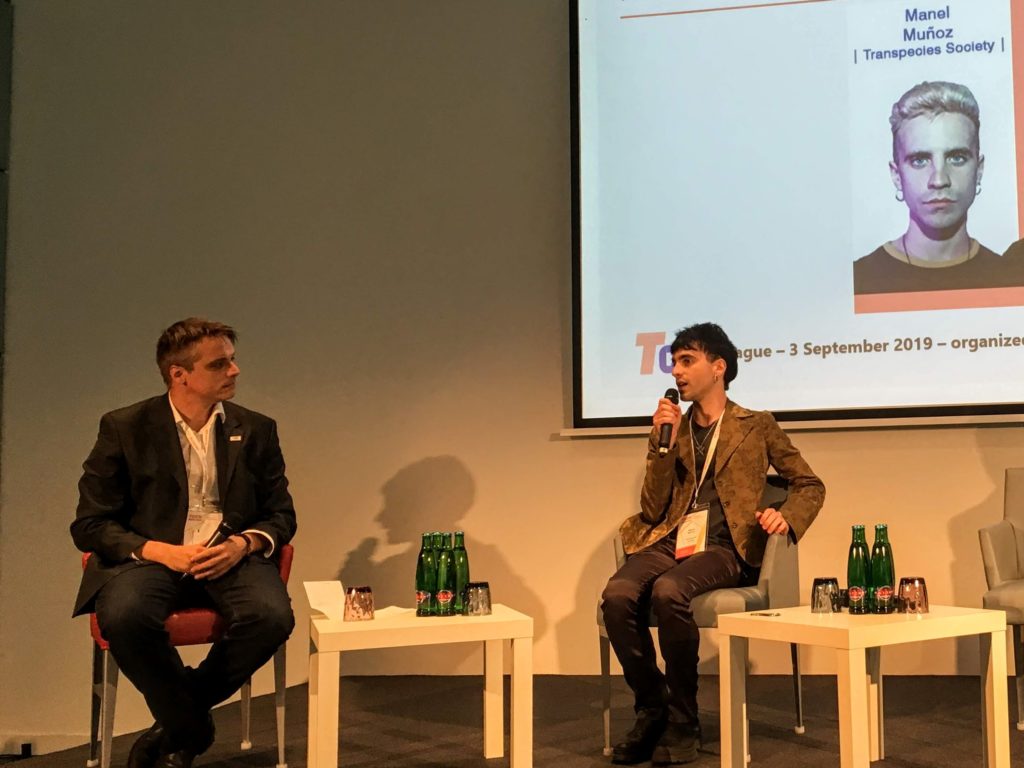
Manel Munoz, a founder of the Transpecies Society, showed how humans can have new senses. In contrast to typical chip implants, that allow you to open the doors or pay at the cash desk, members of the Transpecies Society aim to extend their senses beyond the limits of the human body. Manel has designed and implanted a so-called organ barometer that allows him to hear the air pressure around him. The organ is implanted in the occipital bone and quietly clacks the skull with a frequency depending on the measured air pressure. The bone conducts the clacking to his inner ear and he (and only he) experiences hearing of the clacking.
Other cyborgs at Transpecies Society similarly extended their senses to hear e.g. ultrasounds, to see beyond the visible spectrum, to feel earthquakes or gain cosmo-location ability (they have an implant in their finger, that vibrates each time they point at the desired planet).
At the conference, Manel presented his newest organ design, which additionally to barometer allows him hearing the air temperature and humidity.
“When I work on the sense design I decide how the stimuli that I want to sense will be and when I work on the organ design I decide the shape that the new organ will have.”
Munel Munoz
Audio Revelation
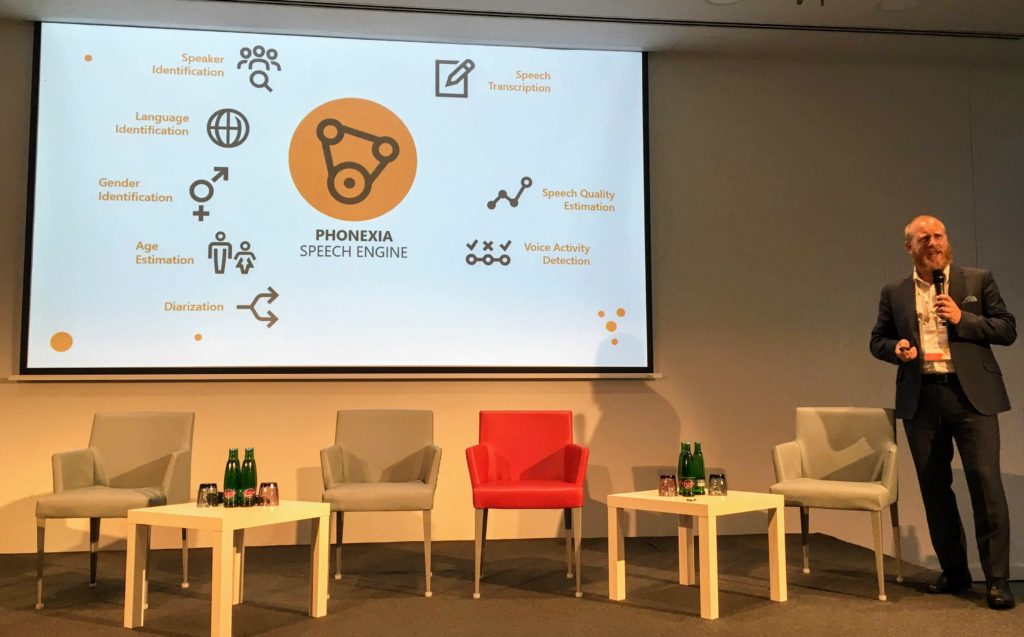
AI has shown its great power in many fields, such as classifying images by having an accuracy of up to 95%. In fact, it became so good, that humans have a higher error rate than algorithms. That’s why the competition after 2017 had to stop since the labels (ground truth about the image classes) were done by humans, have a higher error rate than AI.
Phonexia is a Czech startup that decided to use AI in a less explored but equally ubiquitous domain – the sound. They deliver speech technologies to many companies. At the conference, they demonstrated how their software can extract various information, such as speaker’s language detection, speaker gender extraction or age estimation just from the phone call. Additionally, they can make a voice-like fingerprint of the speaker which can be used in the future for user authentication. Next time you call the helpdesk, you may be authenticated just by your voice, without being stalled by questions such as what is your ID number or what is your grandmother’s maiden name.
This is a great example of extracting other useful information from the sound than the most researched area of translating speech-to-text. It is apparent, that sounds contain a lot of useful information that scientists still learn how to extract and use. E.g., another Czech startup Neuron Soundware, where I work as a senior researcher, takes advantage of a sound change between a working engine and an engine that is about to break. We use AI and engine sound to predict the engine failure before it happens, which allows companies to save a lot of costs connected with the production outage and late repairs.
Takeaway: Information retrieval from the sounds in still not fully explored and I think we are about to see more emerging AI companies, that learn to extract useful information from the sounds.
Beyond the Real World
Real estates are becoming less affordable than ever. In this conference, Somnium Space presented a solution to live in virtual reality.
Somnium Space presented their VR game played on 5 km2, where players can build anything they want, e.g. houses, museums, cinemas, on the properties that they possess. At first glance, this game is very similar to the Second Life idea. However, this game is not just entertainment! Players can actually make a decent profit in this game.
They presented a couple of ways to make a revenue. E.g., a player can build their own entertainment center, e.g. roller coaster and charge other players for using it. Another way to place an object (such as TV, cars) with a non-intrusive advertisement on it and whenever other players interacts with an object, you are making money for online advertisement. Another way (which is far from being the last option), one can speculate on parcel prices and buy them in hope that their prices will rise.
Somnium Space has also found a way to use blockchain in their virtual world. All the player’s possessions are stored over the blockchain technology. So one can sell his properties through blockchain transactions and Somnium Space has no right for it.
Takeaway: Mixing VR technology with a revenue generator will allow players to be even more engaged in it. And for investors: if this game becomes popular, possessing real estate in this game could be a gold miner. On the other hand, there are a lot of other games where players can make decent money.
Conclusion
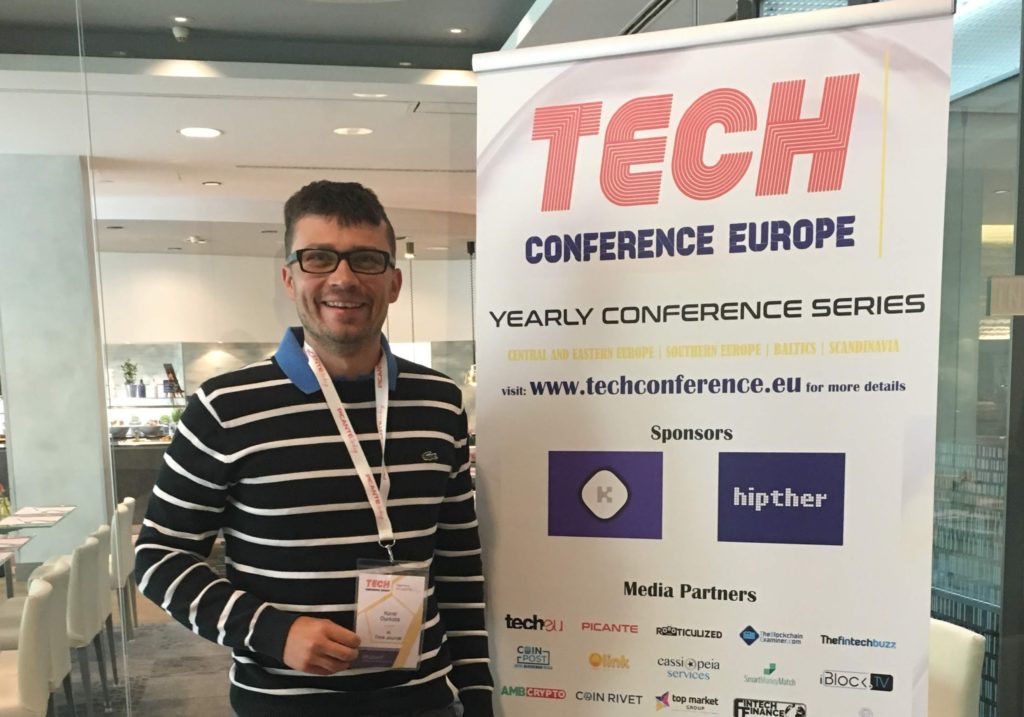
Overall, the conference was well prepared with interesting topics on the agenda. I didn’t see there many novel technical ideas, as it is in academic conferences, but it is expected that companies will not share their know-how but products and their use cases.
It is interesting to see, how startups create new products that use spectrum of different technologies in it (e.g. VR and blockchain) and explore new use cases (e.g. sound authentication). I think that more amazing and diverse technologies are still coming.
